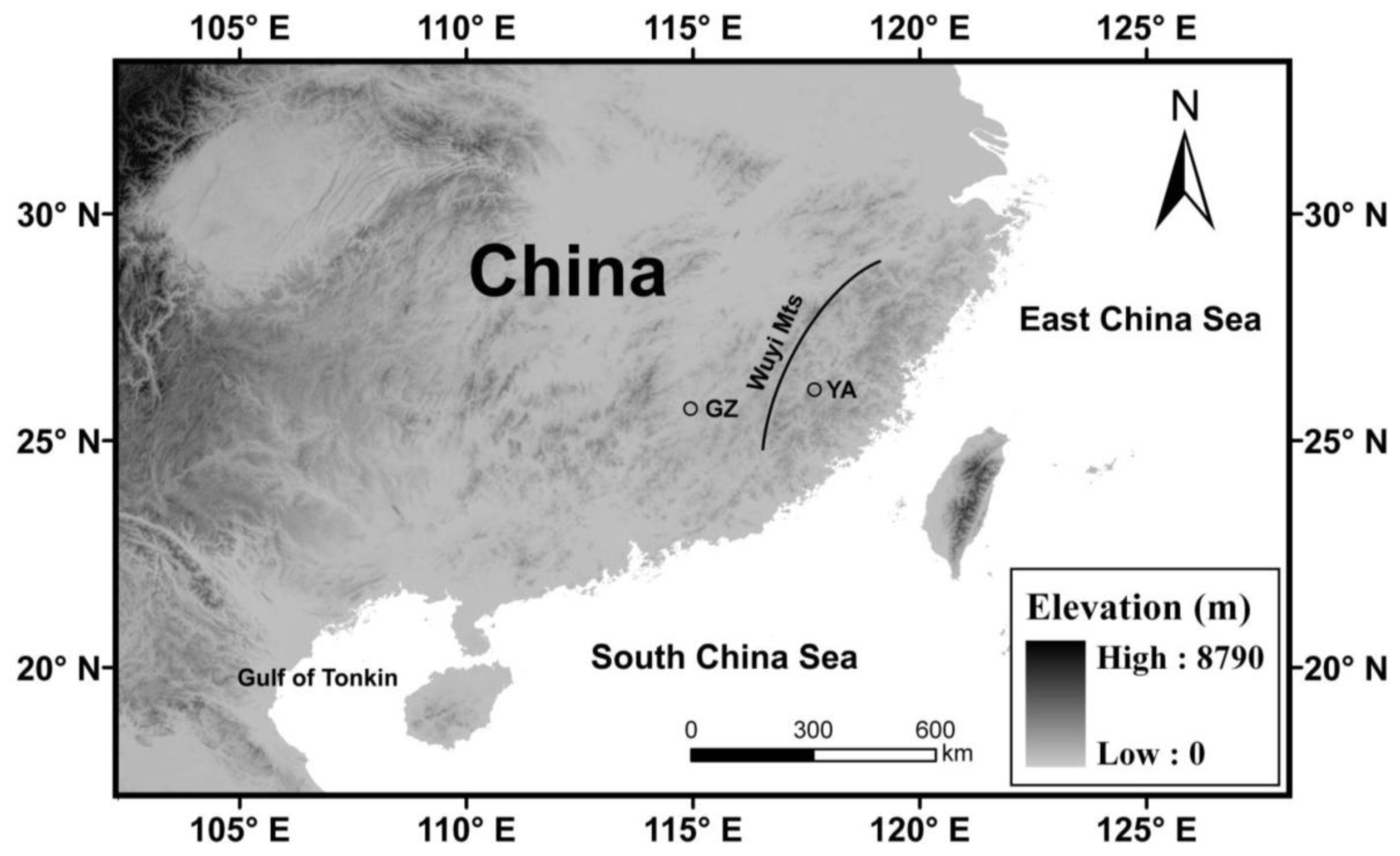Isolation and Characterization of Microsatellite Loci in the Chinese Cobra Naja atra (Elapidae)
Abstract
:1. Introduction
2. Material and Methods
3. Results and Discussion
Acknowledgments
References
- Wüster, W; Golay, P; Warrell, DA. Synopsis of recent developments in venomous snake systematics. Toxicon 1997, 35, 319–340. [Google Scholar]
- Zhao, EM. Naja atra cantor. In China Red Data Book of Endangered Animals (Amphibia and Reptilia); Zhao, EM, Ed.; Science Press: Beijing, China, 1998; pp. 274–276. (in Chinese) [Google Scholar]
- Schlötterer, C; Pemberton, J. The use of microsatellites for genetic analysis of natural populations—A critical review. In Molecular Approaches to Ecology and Evolution; Desale, R, Schierwater, B, Eds.; Birkhäuser Verlag: Basel, Switzerland, 1998; pp. 71–86. [Google Scholar]
- Zane, L; Bargelleoni, L; Patarenello, T. Strategies for microsatellite isolation: A review. Mol. Ecol 2002, 11, 1–16. [Google Scholar]
- Freitas, PD; Martins, DS; Galettijr, PM. CID: A rapid and efficient bioinformatic tool for the detection of SSRs from genomic libraries. Mol. Ecol. Resour 2008, 8, 107–108. [Google Scholar]
- Kalinowski, ST; Taper, ML; Marshall, TC. Revising how the computer program CERVUS accommodates genotyping error increases success in paternity assignment. Mol. Ecol 2007, 16, 1099–1106. [Google Scholar]
- Raymond, M; Rousset, F. GENEPOP (version 1.2): Population genetics software for exact tests and ecumenicism. J. Hered 1995, 86, 248–249. [Google Scholar]
- Rousset, F. Genepop’007: A complete reimplementation of the Genepop software for Windows and Linux. Mol. Ecol. Resour 2008, 8, 103–106. [Google Scholar]
- Excoffier, L; Laval, G; Schneider, S. ARLEQUIN (version 3.0): An integrated software package for population genetics data analysis. Evol. Bioinf. Online 2005, 1, 47–50. [Google Scholar]
- Rice, WR. Analyzing tables of statistical tests. Evolution 1989, 43, 223–225. [Google Scholar]
- Lin, HC; Li, SH; Fong, J. Ventral coloration differentiation and mitochondrial sequences of the Chinese cobra (Naja atra) in Taiwan. Conserv. Genet 2008, 9, 1089–1097. [Google Scholar]

| Locus | Repeat motif | Primer sequences (5′-3′) | Size range (bp) | Ta (°C) | Na | Ne | Ho | He | PIC | N | Accession No. |
|---|---|---|---|---|---|---|---|---|---|---|---|
| p26 | (TGTA)11 | F:5′TAMRA-TGCGAAATAACCCATTCTAATC R:5′-TCTAGATGCTTATATGACCACAGG | 200–242 | 55 | 9 | 4.378 | 0.525 | 0.781 | 0.743 | 40 | HQ881486 |
| p92 | (AC)14 | F:5′HEX-AACCTCTCCCTGAATCAACTAG R:5′-GCAGATATAGCACACTTGTTTG | 145–171 | 55 | 7 | 2.344 | 0.512 | 0.580 | 0.492 | 43 | HQ881492 |
| p122 | (AC)16 | F:5′FAM-TGAATGAAGGAACAGCACAATC R:5′-AACAGGAGCGAAGAGGTTTC | 140–170 | 55 | 4 | 2.090 | 0.500 | 0.527 | 0.461 | 44 | HQ881490 |
| p121 | (GT)18 | F:5′TAMRA-AGTCAACTGAATCTTCTCCATC R:5′-CAACTCCACTTCCCCAGAC | 173–208 | 55 | 6 | 2.620 | 0.213 | 0.625 | 0.590 | 47 | HQ881493 |
| p8 | (GT)15 | F:5′FAM-TTCATTGAGTGGTGAGTGAGC | 118–146 | 55 | 8 | 2.012 | 0.362 | 0.508 | 0.460 | 47 | HQ881488 |
| R:5′-CTTCAGACCCTTCTCTTTATTACTC | |||||||||||
| p124 | (CA)19 | F:5′TAMRA-CACTGTTGGTCTGAAAATCTCTAT R:5′-GTTTTCAGTTTGTTTGTCAATGTC | 103–140 | 55 | 10 | 5.863 | 0.417 | 0.838 | 0.807 | 48 | HQ881487 |
| p88 | (AC)14 | F:5′HEX-CACACAAACAATCGCTCTACAC R:5′-AGCCTTCCAGACATCAAATCAG | 50–77 | 55 | 6 | 1.936 | 0.396 | 0.489 | 0.454 | 48 | HQ881484 |
| p87 | (GT)22 | F:5′FAM-AAATCCCAGTAGAGGTTTGTTC R:5′-GGACAGTGGTCGTCACAC | 102–144 | 55 | 8 | 4.267 | 0.417 | 0.774 | 0.732 | 48 | HQ881489 |
| p265 | (TG)19 | F:5′HEX-GCACACAGGGTCTTCATTATTG R:5′-TCCACAGCGAAACTCATCAG | 128–164 | 55 | 10 | 5.260 | 0.646 | 0.818 | 0.785 | 48 | HQ881491 |
| p132 | (AC)20 | F:5′FAM-TTCACCAGGTTCCAATGTTCC R:5′-AGTCAGCCATTGTTCACTCTG | 83–121 | 56 | 5 | 1.425 | 0.319 | 0.301 | 0.280 | 47 | HQ881485 |
| p22 | (CA)22 | F:5′TAMRA-CAAGGGGACAGTGGTCTTC R:5′-TCTGGGCAAATGATGAAAATCC | 52–94 | 55 | 6 | 2.628 | 0.468 | 0.626 | 0.563 | 47 | HQ881494 |
| p262 | (AC)16 | F:5′HEX-CACTGGAGCTGGACACTTG R:5′-TCATTTAGAGCAAAGGTGATGC | 107–137 | 55 | 12 | 5.804 | 0.854 | 0.836 | 0.810 | 48 | HQ881495 |
| p140 | (TG)16 | F:5′FAM-GGAAAGATGGAAATGGCTTCAC R:5′-ATTCGGTTTGGTGGCAGAC | 142–173 | 55 | 7 | 2.122 | 0.333 | 0.534 | 0.493 | 48 | HQ881496 |
© 2011 by the authors; licensee MDPI, Basel, Switzerland. This article is an open-access article distributed under the terms and conditions of the Creative Commons Attribution license (http://creativecommons.org/licenses/by/3.0/).
Share and Cite
Lin, L.-H.; Mao, L.-X.; Luo, X.; Qu, Y.-F.; Ji, X. Isolation and Characterization of Microsatellite Loci in the Chinese Cobra Naja atra (Elapidae). Int. J. Mol. Sci. 2011, 12, 4435-4440. https://doi.org/10.3390/ijms12074435
Lin L-H, Mao L-X, Luo X, Qu Y-F, Ji X. Isolation and Characterization of Microsatellite Loci in the Chinese Cobra Naja atra (Elapidae). International Journal of Molecular Sciences. 2011; 12(7):4435-4440. https://doi.org/10.3390/ijms12074435
Chicago/Turabian StyleLin, Long-Hui, Lu-Xi Mao, Xia Luo, Yan-Fu Qu, and Xiang Ji. 2011. "Isolation and Characterization of Microsatellite Loci in the Chinese Cobra Naja atra (Elapidae)" International Journal of Molecular Sciences 12, no. 7: 4435-4440. https://doi.org/10.3390/ijms12074435




